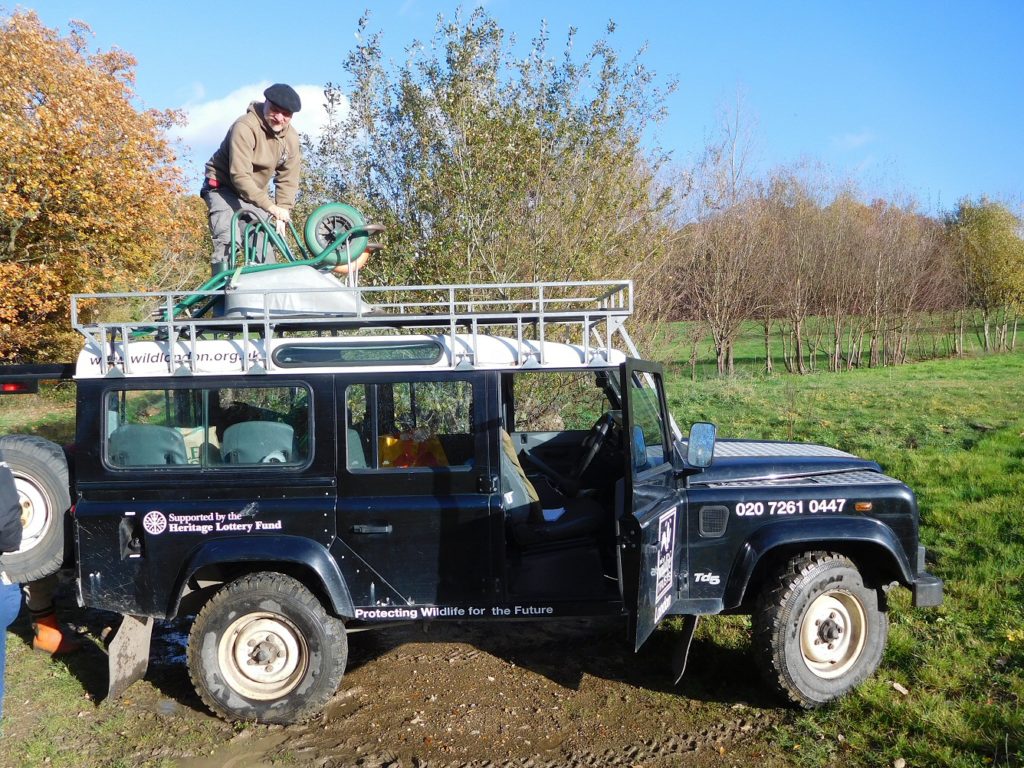
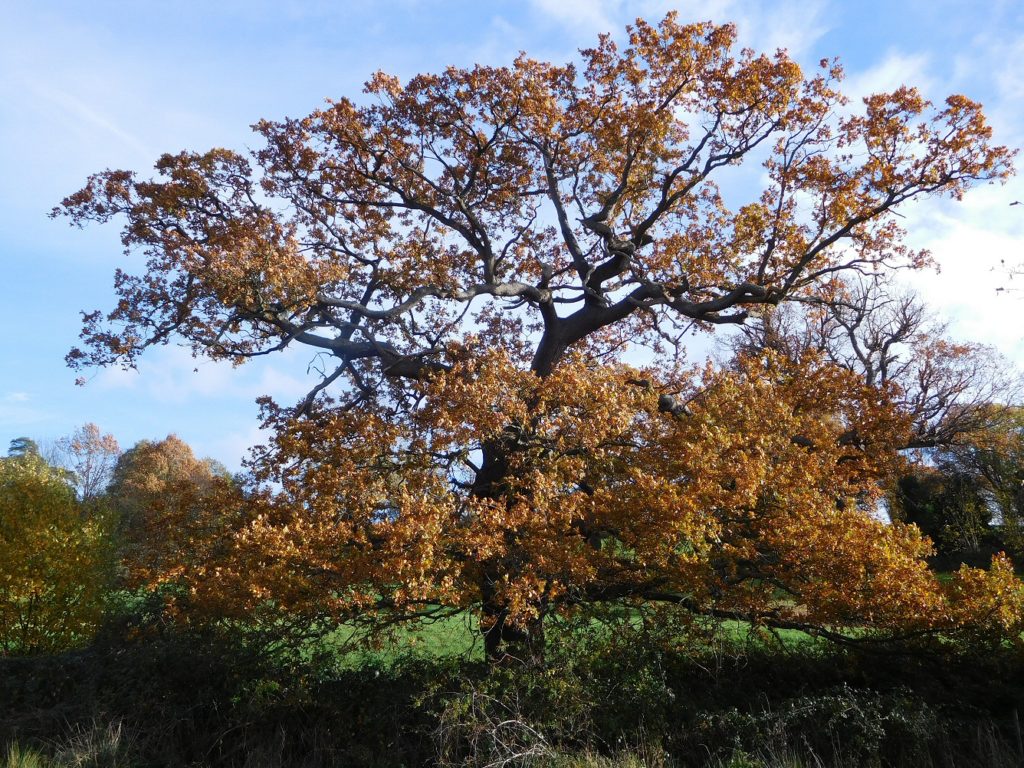
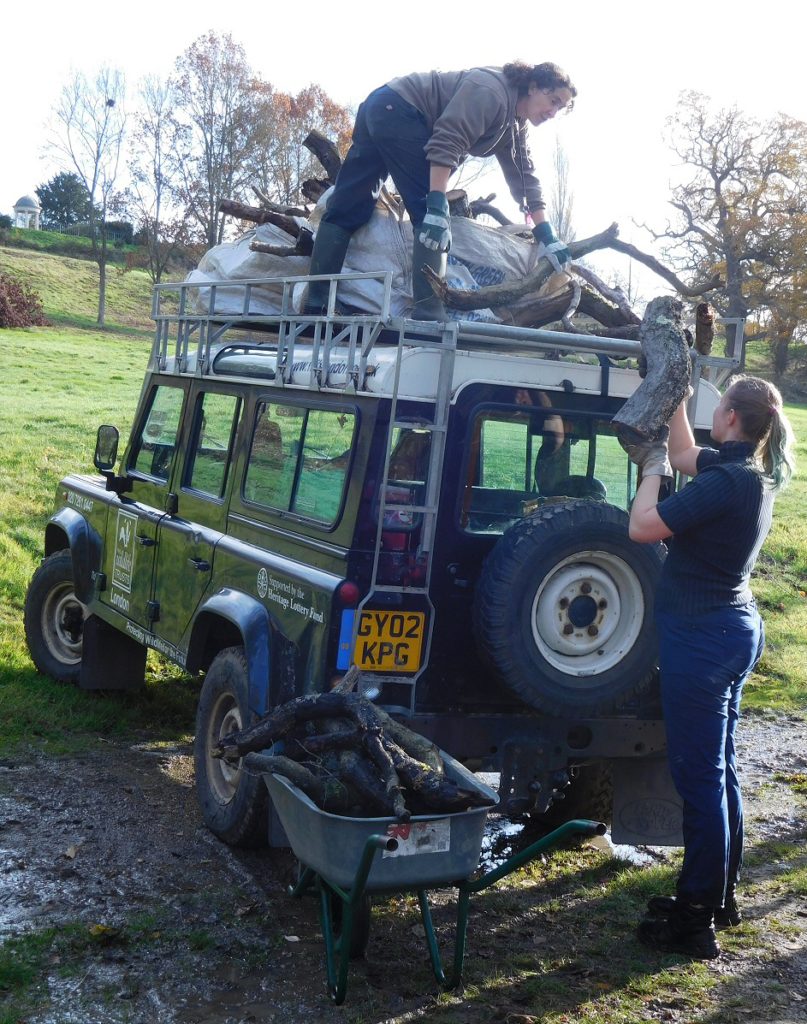



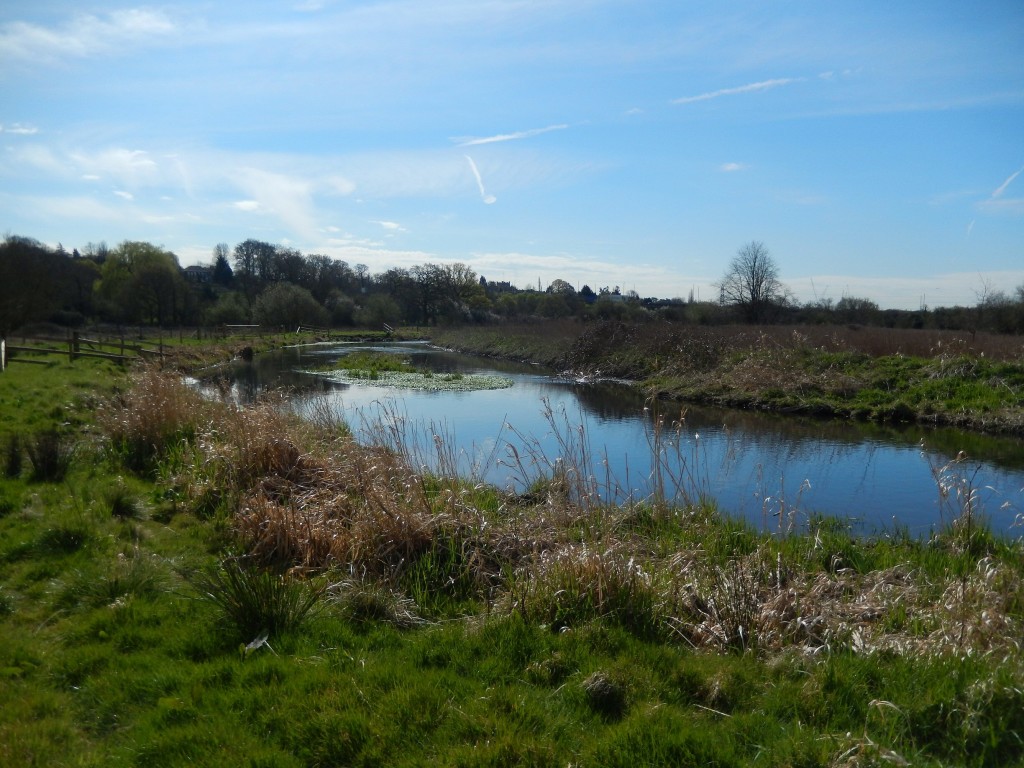
Well, it isn’t every day one visits 3 nature reserves, but today I had a look at Hillingdon NHS’s Harefield Place LNR, London Wildlife Trust’s Frays Farm Meadows SSSI, and Denham Lock Wood to boot.
These are by London standards remarkably secluded and inaccessible, which is to say you need to know where to park and which way to walk, as there’s basically no indication on the ground until you arrive, and even the LWT website is misleading.
Whatever the reason, it’s a delight on a fine spring day to find woods alive with Chiffchaffs and Blackcaps, a pair of Greater Spotted Woodpeckers calling and chittering with excitement directly overhead (and visible in the still nearly-leafless trees), the Blackthorn in delicate white clouds of new blossom, and a Roe Deer skipping away across the meadow, stotting slightly and flashing its “I’ve seen you, I’m running away, and I’m faster than you so don’t bother” white rump-patch. It’s what zoologists call an honest signal, something that benefits both predator and prey. The predator is saved a wasted chase, and the prey gets away without hassle to live another day.
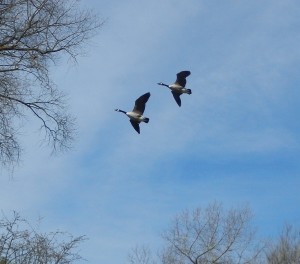
I walked in on the Golf Course path, a pleasant trek down the hill, past the lakes and along the muddy track through the willow woods. There are only our resident wildfowl at this time of year – Canada Geese, Egyptian Geese, Coot, Moorhen, Mallard, Tufted Duck, Mute Swan, Great Crested Grebe: presumably all breeding right here.
The track was studded with deer slots, and it was nice to have my “Roe Deer” slot identification confirmed with a broad-daylight sighting. Out of the woods, it grew hot, and I discarded coat and pullover.
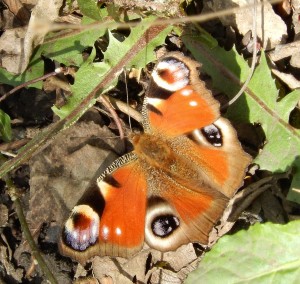
A few butterflies flitted about – Brimstone near the brambles, a Meadow Brown or two, several Peacock.
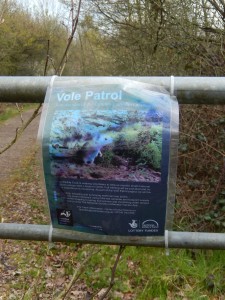
I met another LWT volunteer, Daniel, who it turned out was not only checking the local boardwalks, but had got up at 5:30 am to do the Vole Patrol on his local patch here! I said I volunteered at Gunnersbury Triangle, and he said he knew who I was, he read my blog (Hi Daniel!). We talked of Kingfishers and conservation and being bitten by small mammals. He asked me which group I particularly liked, birds, butterflies? I said dragonflies, but it was a bit early for them. Sure enough, a minute later, a damselfly flew past! I got my binoculars on to it but had no chance to identify it to species (Large Red is our earliest, but I saw no colour). Still, a distinct surprise so early in the year. Perhaps they are hatching earlier with the warmer climate.
On the way out, I passed a Vole Patrol poster. Huma, the small mammal expert in charge of the project, really can’t be getting a lot of sleep travelling all over West London like this and trapping every day.
I walked across to Denham Lock, an attractively rustic spot with a line of narrowboats, traditional wooden lock gates and a delightful lock-keeper’s cottage complete with teashop.
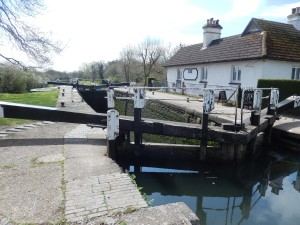
A pair of Grey Wagtails flew about as if they owned the place, landing in the trees beside the canal, a few steps from where I took the photo. They must be breeding here too.
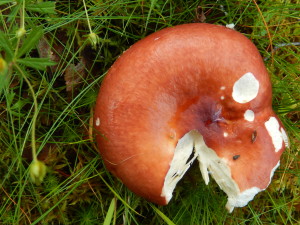
Today I went for a proper nature walk, after cutting a lot of thistles on the farm in the morning. The birchwoods were lovely with Chanterelles, red Russulas, and the first few Orange Birch Boletes of the year.
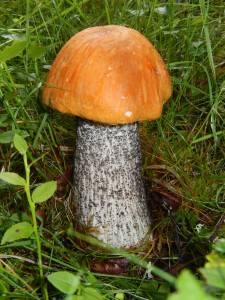
The sun came out from time to time, enough to make the Spey Valley look lushly golden against the green wooded hills and the distant blue Cairngorms, the heather richly brown in the foreground.
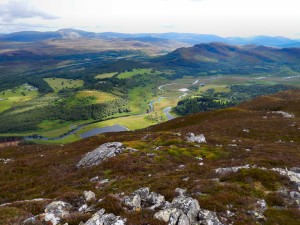

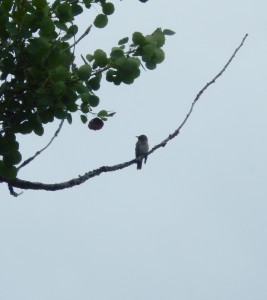
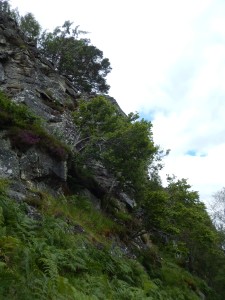
I climbed up the old mossy boulder-field of fallen rocks until I reached the old-growth Hazel woodland, and sat down. Around me, a Spotted Flycatcher brought flies to a juvenile, and a pair of bright yellow Wood Warblers flitted about the trees and showed themselves beautifully. The rocks were richly lichened, and Wild Thyme and Wood Sage (elegant spikes of green flowers with purple anthers) sprouted among the ferns. Maidenhair Spleenwort grew here and there among the rocks. It was really pretty.
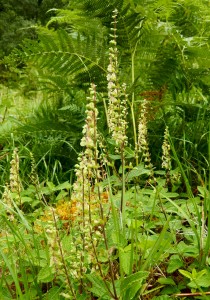
Then I made my way right under the last of the cliffs around to the north and up on to Creag Dhu itself, with glorious views over the Upper Spey valley. Half a dozen feral goats played the role of herbivore, along with a Roe deer that skipped away from me effortlessly up the mountain and over a crest.
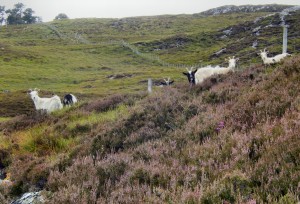
As I neared the summit, a Peregrine Falcon, wings like an anchor, hung motionless in the stiff wind before swooping to the ground.
Back at base, we had a magnificent mushroom sauce on our rice for dinner.

Suddenly it feels like spring. The migrant warblers haven’t arrived, though a resident Cetti’s gave me a fine burst of its loud simple song; and the winter ducks haven’t all gone back up North, a few Goldeneye and Goosander still fishing the lake; but it was almost warm in the bright sunshine, and the wild pear tree in the woods positively sparkled with fresh new blossom.

There were animal tracks too: tiny footprints of Muntjac.
A little further, a fresh pile of tiny scat, Muntjac for sure.
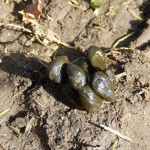
A Sparrowhawk dashed low over the willows, and disappeared as swiftly as it had arrived.
On the path, the much larger slots of Roe deer; and a Rabbit hopped quietly aside.
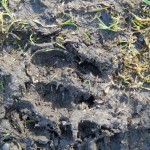
The last of the winter thrushes – a flock of Fieldfares – called their chattering chack-chack from the tall boundary hedge of trees. A flock of gently twittering Goldfinches, too, served as a reminder of a winter only just passing.